Here’s How to Get an Overweight Dog in Shape
18.03.2022.
Weight loss is difficult for anyone; it doesn’t matter if you have two legs or four! Losing weight and getting in shape, on the other hand, can not only add years to your dog's life but also make those extra years more enjoyable. It may be easier than you think to assist your cuddly pooch in losing a few pounds. It only takes a commitment to weight loss and fitness, attention to detail, and the help of your vet. Here’s how to get an overweight dog in shape.
How do I tell if my dog is overweight?
There are a few tell-tale signs that your dog is overweight. Keep in mind, however, that different breeds have different standards. A Mastiff's ribs, for example, should not be visible, whereas a Saluki's should. Here's a handy guide to help you figure out if your dog is overweight - How Heavy Should My Dog Be?
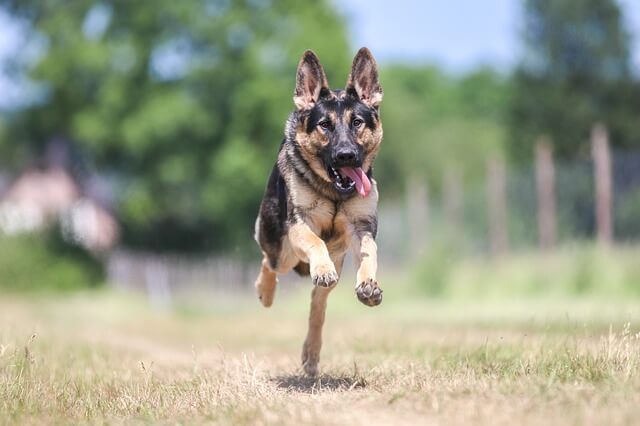
Why does my dog need to lose weight?
As little as five pounds over the ideal body weight can put your dog at risk for severe medical conditions. Unfortunately, when a dog is overweight or obese, the question is no longer whether or not your dog will develop a condition due to the excess weight, but how soon and how serious it will develop. The following are some of the most common disorders associated with obesity:
- Diabetes
- Heart disease
- Osteoarthritis
- Joint injuries are becoming more common
- Blood pressure is too high
- Cancers, particularly intra-abdominal cancers
Overweight and obese dogs typically live shorter lives than fitter, normal-weight counterparts. Heavy dogs are less energetic and playful, and they physically interact less with their families. Because they tend to lie around more, it is easier to miss early signs of illness because we may attribute their lethargy to normal laziness. There is strong evidence that dogs of a healthy weight live significantly longer than dogs of an unhealthy weight.
How should I get my dog started on a weight-loss program?
In theory, weight loss appears straightforward: fewer calories in plus more calories out equals weight loss. Unfortunately, it is not that simple.
You should never put your dog on a diet without consulting with your veterinarian. There could be an underlying medical condition causing or contributing to your dog's obesity. Hypothyroidism and hyperadrenocorticism (Cushing's disease) are two common diseases associated with weight gain. These diseases, as well as others, should be ruled out as possible causes or contributors to your dog's weight problem before embarking on a diet.
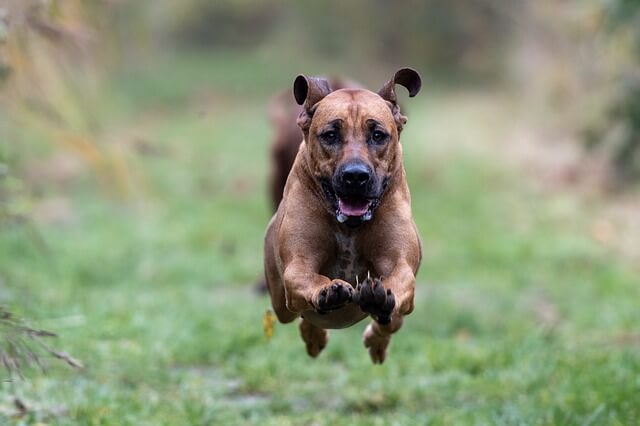
Too many dogs begin a diet and fail to lose weight because the problem was not the diet but rather a disease. Your veterinarian will perform a physical examination and recommend blood tests to ensure that there are no impediments to your pet's weight loss. After that, here are a few things you can do to help your dog get back into shape.
Dietary Guidelines
Dogs gain weight the same way humans do: by overeating and exercising insufficiently. Dogs who consume excessive treats, table scraps, and food at mealtimes will gain weight quickly, especially if they are inactive. Before beginning any new diet or exercise program for your dog, consult with your veterinarian.
To jump-start your dog's weight loss, feed them regular food in the morning but replace their second meal with mostly green beans (low sodium), a bit of kibble, and a doggie multi-vitamin in the evening.
Changing your dog's treats to healthier options will also aid in weight loss. Reduce the number of treats given at one time to save calories. Also, instead of biscuits, cheese, and other high-fat treats, try substituting fresh chopped carrots, apples, or green beans with no added flavoring. This new, crunchy treat will most likely continue to be enjoyed by your dog!
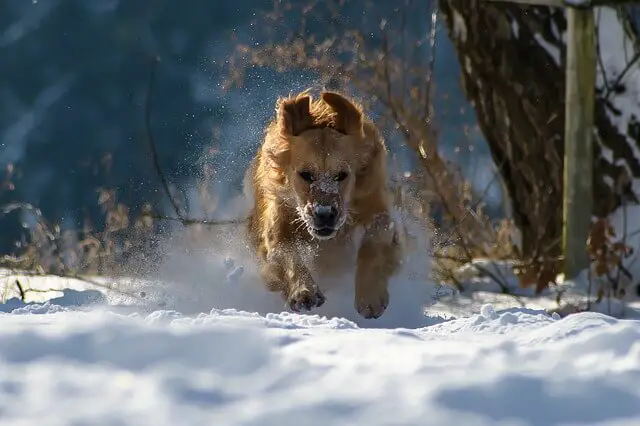
If you're training your dog and using treats as a reward, remember to deduct those calories from your dog's daily calorie allowance.
Finally, avoid making the common mistake of associating food with love. Overfeeding your dog to the point of obesity will most likely shorten the time you have them in your life. Also, don't put too much stock in your dog's opinion: Many dogs will act ravenous even after they have consumed their daily caloric requirements.
Preparing to run
If you decide to go for a run with your dog, keep their age in mind. Repeatedly running on hard surfaces such as concrete or asphalt can cause joint damage in puppies. Many breeders, particularly those of large breeds, advise against jogging on hard surfaces until a dog is at least 12 months old, preferably 18. Instead, experiment with free play on grass or soft surfaces, such as packed sand.
If you want to start running with your dog once they’re mature, make sure they’re in top physical condition. Check with your vet to make sure they don’t have any physical issues that could make running painful or even dangerous, such as heart problems, orthopedic issues like hip dysplasia, or a luxating patella. If your dog's muscles could benefit from some strengthening, equipment such as exercise balls can be used to improve balance and stability.
Lots of physical activity
Of course, more exercise will aid in your dog's weight loss. Most dogs enjoy going for a walk, running, cycling, or hiking, so get outside and enjoy some outdoor activities with them! For obese dogs, it's best to start slowly and gradually increase exercise as they lose weight. However, be careful not to overexercise them, especially if they have a medical condition. Make sure you keep an eye out for signs of heatstroke.
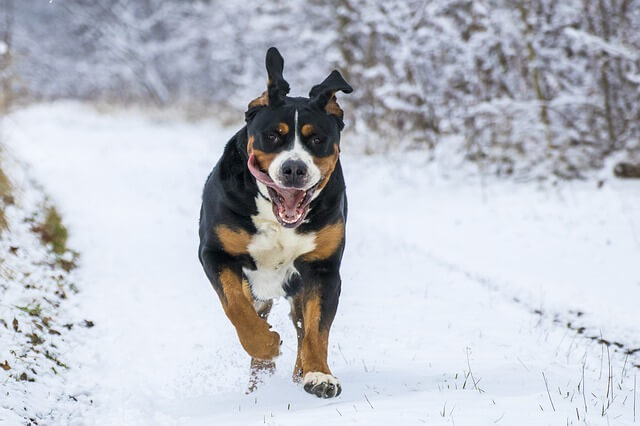
It is best to have your dog checked out by a veterinarian and to discuss an appropriate exercise program for your dog if your dog is obese. Begin slowly and gradually increase exercise as the dog loses weight.
Making exercise more enjoyable
Canine sports are a great way to exercise your dog while strengthening your bond. Agility, which is essentially a timed obstacle course, necessitates the ability to communicate with your dog through hand signals and body language, and all that zooming through tunnels and over jumps burns a lot of calories. If you're a beginner, enroll in a training class to familiarize your dog – and yourself – with the obstacles you'll face on the course.
Keep an eye on your dog's appearance and behavior at all times. If they’re panting excessively, slow down or stop and find a cool or shaded spot for some relief. Dogs of all breeds can become overheated. Brachycephalic, or short-nosed, breeds can quickly overheat. On hot days, opt for a game of indoor fetch in the air conditioning or short walks early in the morning or late at night.
And remember, no matter what kind of dog you have, that asphalt can get hot on hot summer days – keep those unprotected paw pads in mind! All dogs must become accustomed to running on hard surfaces for extended periods.
It takes time to get in shape.
Weight gain and loss do not happen overnight. Dogs with more severe obesity, like humans, require more time to lose weight. The good news is that getting your dog in shape isn't difficult. All you need to do is establish a healthy routine and good eating habits.
World Dog Finder team

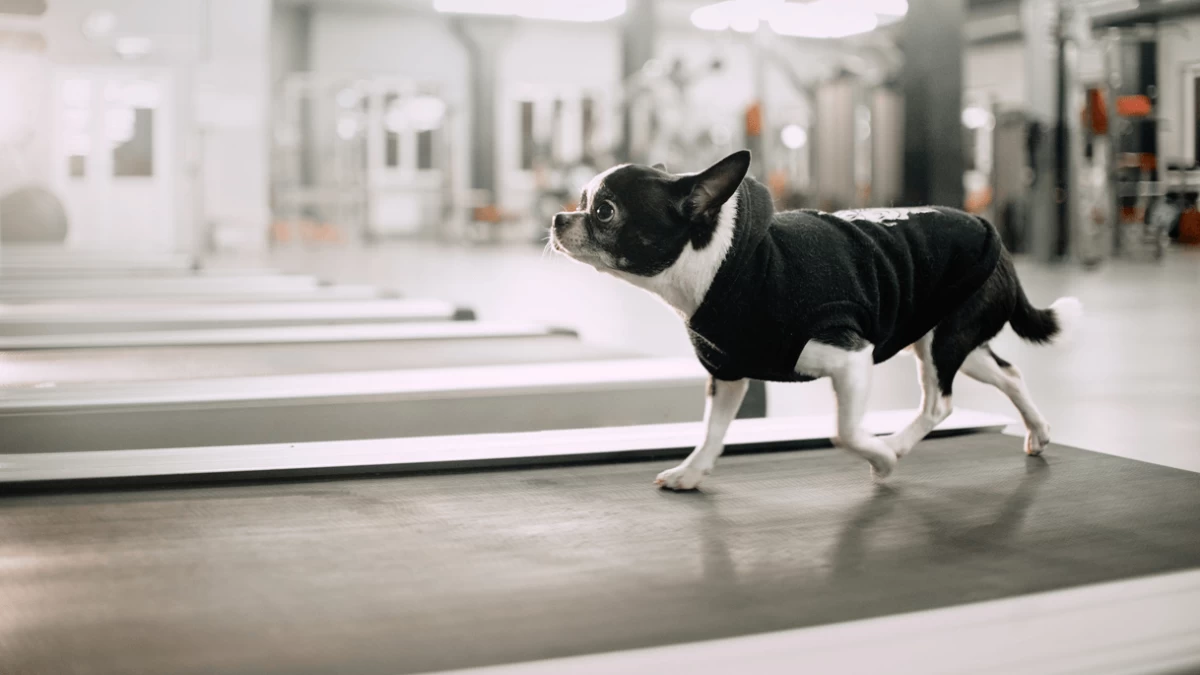

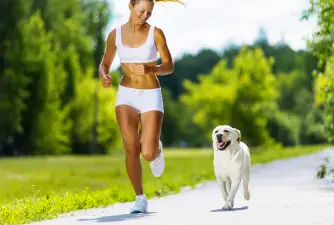

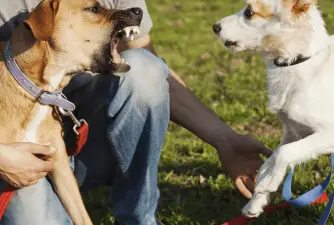

Share